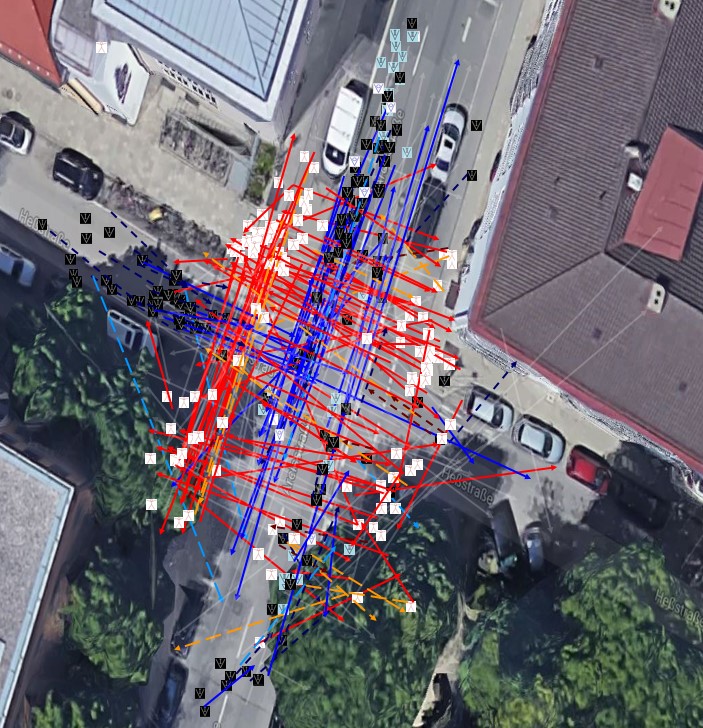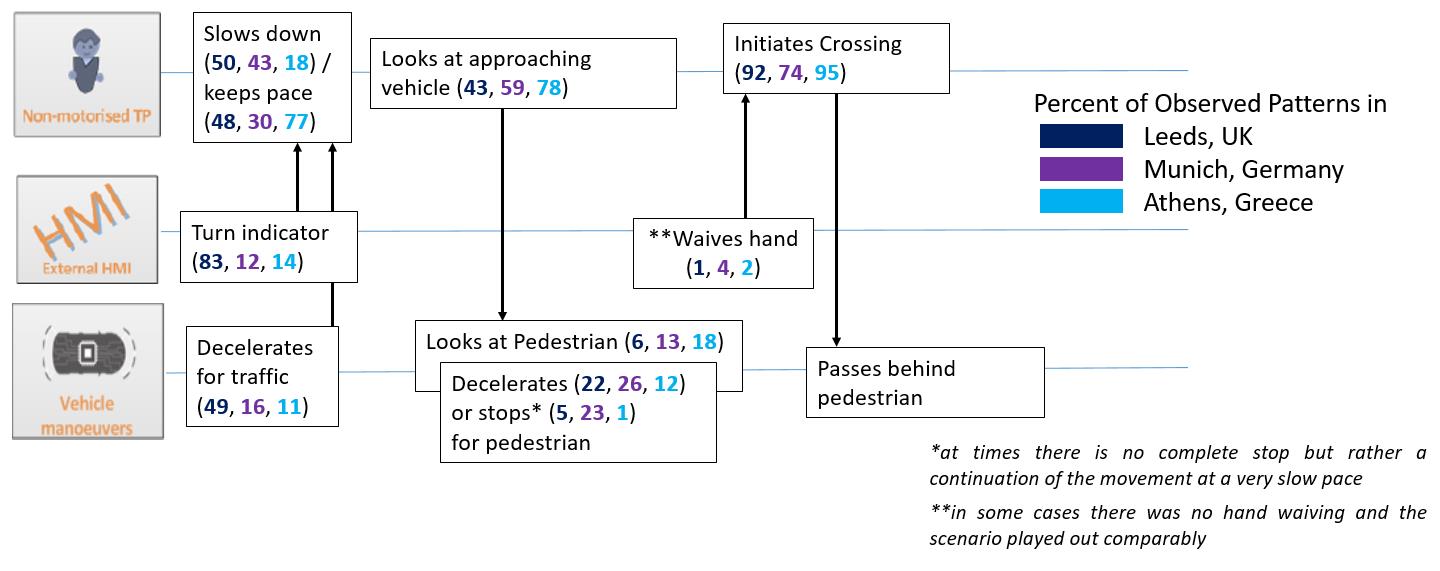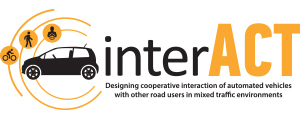Human-human interaction in real traffic
Objectives
Understanding human-human interactions in current traffic is a first step to identify potential communication strategies for expectation-conforming encounters with automated vehicles. Our goal was to observe real traffic to identify potential factors influencing interactions, map the sequences of events and quantify the occurrence of events in interactions. Furthermore, we aimed to model observed interactions to quantify the effects of traffic encounters. To enable automated vehicles to correctly identify interaction demanding situations with pedestrians, we aimed to enhance path prediction algorithms and intention recognition capabilities.
Technical approach
An observation study was planned, designed and conducted in three countries: Athens (Greece), Leeds (UK) and Munich (Germany). To cover all of the four interACT scenarios, two locations per country –a busy intersection and a shared space scenario –were chosen as observation sites.
To generate a holistic view of human-human intersections, four different methods were used to generate data:
- Manual observations using an HTML app to sequence the order of events that happened in an observed interaction
- Questionnaires to gain insights on how pedestrians perceived a previous interaction
- High Altitude Video recordings to verify the observed sequences and extract positional information using computer vision algorithms
- A stationary ground LiDAR providing positional information of observed road users
Further simulator studies were conducted to provide insights into the perception and decision making processes, which the quantitative models are based on.
Main results
The observation was conducted over several months in the end of 2017 resulting in overall:
- 900+ observation protocols
- 150+ completed questionnaires
- 100+ hours of videos and
- 20+ hours of LiDAR Data
Overall, occurrence and necessity of interactions was found to be highly depending on the individual traffic situation. A variety of influences, such as traffic density, time of day and specific traffic conditions (e.g. a bus arriving) had a high effect on traffic and thus the occurrence of interactions. Explicit communication (in the form of gestures, flashing headlights etc.) was observed very rarely. Most potential interaction-demanding situations were resolved beforehand by adjusting kinematic motion. This was consistent with pedestrians reporting to mostly rely on implicit cues, such as vehicle velocity and position. Cooperation, communication and thus interaction between human road users took place at low speeds, usually in congested traffic situations below 20 km/h. At higher speeds conflict avoidance was predominant, with pedestrians or drivers waiting for large enough inter-vehicle gaps without expecting the following vehicle to adapt.
Variable-drift diffusion models and threshold distribution models were developed, enabling the calculation of probability distributions of pedestrian crossing times when encountering automated vehicles. Furthermore, a long-term behavior prediction algorithm was developed. One further topic was the detection of further features to improve the performance of interaction models and enable an interaction between automated vehicles and pedestrians. Therefore a head orientation estimation as well as a waving gesture recognition was developed.

Figure 1: Manual observations from an intersection in Munich

Figure 2: Sequence of events and rate of occurrence of observed traffic encounters in Leeds, Athens and Munich
References
Dietrich, A., Bengler, K., Evangelia, P., Nathanael, D., Ruenz, J., Wu, J. et al. interACT D.2.1 Preliminary description of psychological models on human-human interaction in traffic. (2018)
Dietrich, A., Bengler, K., Markkula, G., Giles, O., Lee, Y. M., Pekkanen J., Madigan, R. & Merat, N. interACT D.2.2 Final description of psychological models on human-human and human-automation interaction. (2019)

